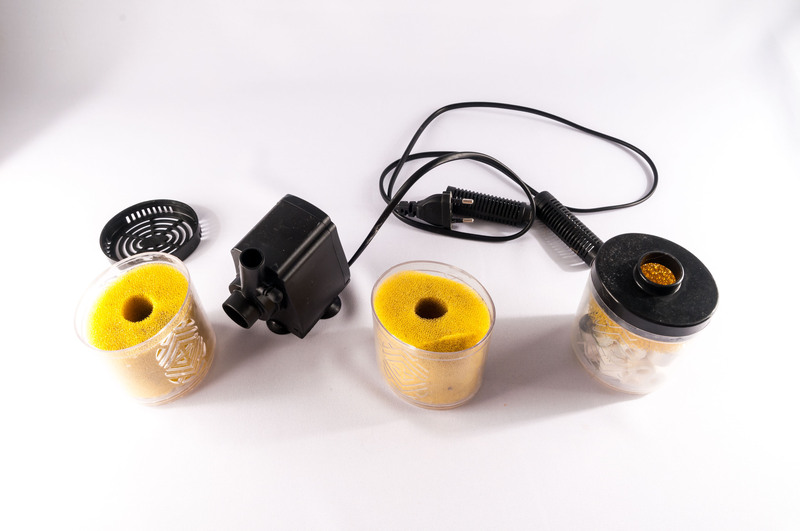Discover How to Maintain Your Sofa with Expert Storage Tips
Posted on 18/06/2025
Your sofa is the center of comfort in your home, offering relaxation and style in equal measure. Whether you are moving, renovating, or just in need of extra space, proper sofa maintenance during storage is crucial to ensuring it remains in top condition. Discover how to maintain your sofa with expert storage tips in this comprehensive guide, so your cherished furniture continues to impress and comfort for years to come.
Why Proper Sofa Maintenance Matters During Storage
Many homeowners underestimate the importance of expert storage tips for sofas. However, improper storage can result in:
- Mold and mildew growth
- Structural damage
- Fading or deterioration of fabric
- Pest infestations
- Unpleasant odors
By following our expert advice, you can prevent common storage problems and prolong your sofa's lifespan.

Preparing Your Sofa for Storage
Before you even think of moving your sofa into storage, meticulous preparation is key. Here's how you can ready your sofa for a period away from daily use:
1. Clean Your Sofa Thoroughly
- Vacuum all fabric surfaces: Use the upholstery attachment to remove crumbs, dust, and pet hair.
- Spot-treat stains: Apply a gentle fabric cleaner or consult the sofa's care instructions for stubborn stains.
- Clean under cushions: Lift and vacuum beneath each cushion to tackle hidden debris.
- Wipe down hard surfaces: For leather or wooden accents, use suitable cleaners and a soft cloth.
A clean sofa is less likely to develop odors or attract pests during storage.
2. Disassemble if Possible
Many modern sofas are designed for easy disassembly. Remove legs, cushions, and any detachable parts. This makes the sofa easier to transport, reduces the risk of breakage, and allows parts to be stored efficiently. Keep hardware in labeled bags for reassembly.
3. Protect With Proper Covers
- Use breathable covers, such as cotton sheets or furniture blankets, instead of plastic, which can trap moisture.
- Avoid direct plastic contact to prevent condensation and mildew.
- Tightly wrap arms, legs, and corners to safeguard against bumps and scrapes.
Proper covering is one of the most valuable storage tips for maintaining your sofa's quality.
Choosing the Right Storage Environment
Where you store your sofa is just as important as how you prepare it. Consider the following expert storage tips:
1. Choose Climate-Controlled Storage
- Humidity control: Excess moisture can be disastrous for fabric and leather sofas alike. A climate-controlled unit safeguards against mildew, mold, and warping.
- Temperature moderation: Extreme cold or heat can cause cracking in leather, weakening in adhesives, and fading of fabrics.
Investing in a climate-controlled facility helps in maintaining your sofa in pristine condition over long periods.
2. Elevate the Sofa
- Use pallets or sturdy blocks to keep your sofa off the ground.
- This technique prevents water damage from potential leaks and encourages airflow around the sofa's base.
Elevation also deters pests and avoids soil-based contamination.
3. Avoid Overcrowding
- Leave space around your sofa to promote airflow and ease access.
- Avoid stacking heavy items on top, as this can deform cushions and frames.
Strategic placement is essential to maintain your sofa's shape and quality during storage.
Expert Storage Tips for Different Sofa Materials
Sofas come in a variety of materials, each requiring specialized care during storage. Here's how to cater to your specific type:
Leather Sofas
- Clean with a leather-specific conditioner before storage to prevent drying and cracking.
- Avoid plastic coverings directly on leather; use a breathable cotton sheet instead.
- Maintain moderate humidity to keep the leather supple.
Fabric Sofas
- Completely dry the sofa after cleaning before covering.
- Use fabric-safe sprays to protect against moths and beetles.
- Check cushions for moisture; moisture traps can be placed underneath if needed.
Wooden-Framed Sofas
- Polish exposed wood with furniture wax to prevent drying and cracking.
- Wrap wooden areas with soft cloth or bubble wrap for extra cushioning.
- Avoid storing in damp basements or direct sunlight.
Prolonging Your Sofa's Life: Steps to Take During Storage
Maintenance doesn't stop once your sofa is safely tucked away. Regular check-ins and minor care steps can keep your furniture looking and smelling fresh:
1. Visit the Storage Space Occasionally
- Open up covers and allow the sofa to breathe occasionally, especially in longer storage periods.
- Inspect for pests, mold, and unwanted odors.
2. Freshen Up with Dehumidifiers or Moisture Absorbers
- Place moisture absorbers nearby to control humidity and prevent mold growth.
- Avoid scented products that may stain or embed into the upholstery.
3. Rotate and Adjust
To prevent uneven pressure points, gently reposition the sofa or cushions during storage if possible.
Reassembling and Restoring Your Sofa After Storage
When it's time to bring your sofa back into your home, follow these post-storage best practices for optimal results:
- Remove covers and allow the sofa to air out for several hours in a ventilated space.
- Use a vacuum or lint roller to clear any dust or particles.
- Inspect for any damage -- check seams, legs, and joints before full use.
- If necessary, clean or condition fabric and leather surfaces as recommended by manufacturers.
- Reassemble carefully, ensuring any screws or bolts are firmly tightened.
Additional Expert Sofa Storage and Maintenance Tips
Take your sofa care routine a step further with these professional suggestions:
- Document the condition: Take photos before storage. This helps you track changes or damage during storage.
- Check insurance: For valuable pieces, ensure your storage facility or homeowner's insurance covers furniture in storage.
- Avoid using strong chemicals: Only use cleaning products appropriate for your sofa's material to prevent fading or deterioration.
- Label all parts if disassembled, especially for sofas with intricate assembly or many removable components.
Common Mistakes to Avoid When Storing Sofas
Even with the best intentions, it's easy to overlook some crucial steps. Here are frequent mistakes to avoid:
- Storing a damp sofa: Always ensure your sofa is completely dry before storing to prevent mold and unpleasant odors.
- Using non-breathable covers: Avoid plastic sheeting which traps moisture and encourages mildew.
- Neglecting climate controls: Poor ventilation and fluctuating temperatures are the enemy of furniture longevity.
- Overloading the storage unit: Heavy items on top of your sofa risk permanent indentations or frame damage.
- Forgetting to check on the furniture: Out of sight shouldn't mean out of mind; periodic inspections are essential.

FAQs about Maintaining and Storing Sofas
- How often should I check my sofa in storage?
Ideally, every 2-3 months, more frequently in very humid or pest-prone areas. - What if my sofa develops an odor during storage?
Clean with fabric-safe deodorizers and air it out thoroughly before use. - Can I store my sofa in a garage?
Only if the garage is dry, well-ventilated, and preferably climate-controlled. - Do I really need to disassemble my sofa?
While not always necessary, disassembly can prevent stress on joints and ease the storage process.
The Bottom Line: Expert Storage Leads to Perfect Sofas
Proper sofa storage and maintenance take effort, but the rewards are well worth it. By implementing these expert storage tips, you will ensure your sofa remains beautiful, comfortable, and ready for use -- whether you're bringing it out in a few weeks or after several years. Remember to clean, cover, elevate, and check your furniture regularly for truly lasting results.


